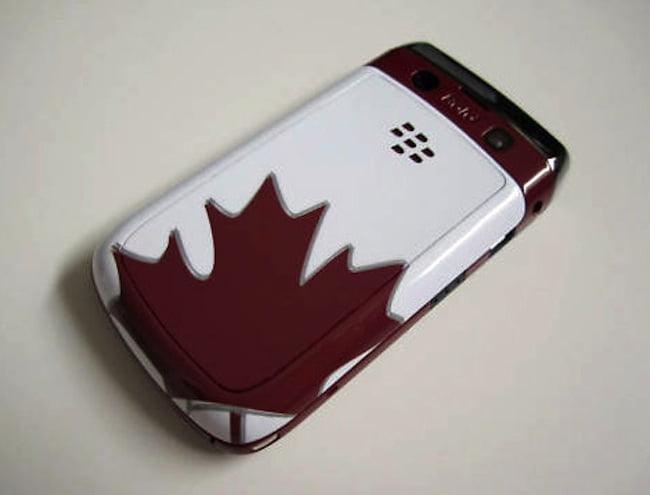Commodities are no longer defined by cost and utility, they are deconstructed and repositioned by imagining new discursive networks of manufacture and one’s position within them. One example of the latency that can occur between the discursive deployment of production rhetoric and the practical phenomena which prompts it can be found in the dialogue surrounding the 2008 presidential address to the Canadian Manufacturers & Exporters association. Despite the implications of the (then) recent United States financial meltdown, Jayson Myers focused not on the collapse, nor the abstract financial instruments that had emerged as its most recognizable cause. He instead emphasized a continued material reality for Canadian manufacturing as a critical index of future economic prosperity. It is a role whose meaning, he conceded, had become increasingly ambiguous (and decidedly, it seemed, immaterial) in the face of the expansion of truly global networks of trade and manufacture:
This is the new age of manufacturing. Not a single product in the past 50 years has revolutionized the way you and I work on a daily basis as much as this tool. The BlackBerry is synonymous with innovation and yes it is also synonymous with manufacturing—Canadian manufacturing.
The BlackBerry is a testament to the changing face of manufacturing. We consider it to be a Canadian product, and we are proud of that fact. Did you know that BlackBerries are manufactured in seven different countries?
We consider the BlackBerry to be a Made-in-Canada product because it is designed by Canadians. It is engineered here, in Canada’s Technology Triangle, and it is supported and marketed here. And yes, some parts of it–the newest models and the most critical parts for new product development–are assembled here.
Welcome to the reality of manufacturing in the twenty-first century.1
Myers presents the BlackBerry as an object of Canadian national identity, an identity that he wants to preserve despite the contra-national implications embedded in trans-national manufacture. He recognizes it as an emblem of state visits, a talking point for international trade forums, and a patriotic symbol of the Canadian consumer-citizen. But the “seven different countries” implicit in its material coherence produce a problematic disjuncture with the traditional consumptive expectations of an object “Made-in-Canada” (it was not, as some other labels already conceded, an object whose identity is no longer “made in” but merely “provided by” a “Canadian Company”). How could the BlackBerry remain a product of “Canada” when it had become distributed throughout geographic sites claiming it as a product of “Mexico,” “Hungary,” and “China?” Despite Myers’s hopeful proclamation, these remote locales seem to complicate the singular world view contained within, but in his view no longer constrained by, the originary label of the “Canadian” phone.

At the turn of the last century the regional maker’s mark of a product largely coincided with the bulk of the productive force associated with its manufacture, if not its total material constitution. The aftermath of the Second World War created a sharper division between values of nationalistic production and the economic advantages intrinsic to the growing pool of accessible remote labor. By the late 1960s and 1970s, decentralization of manufacture led some products towards a token “assembly” in their country of origin—a country no longer synonymous with their design, marketing, or labor. Speaking of the importance of Research in Motion’s Waterloo manufacturing plant, founder Mike Lazaridis had already demonstrated a continuation of the trend toward a primarily intellectual, rather than material, meaning for production. When he comments that he “built his factory right next to the mine,” he is not referring to the tin, silver, or copper of the device’s material construction. He is identifying the intellectual resources of the University of Waterloo, the Wilfrid Laurier University, and Conestoga College as the total resources dictating the meaningful geographic identity of the device.2
What are the stakes of this identity? As a “new reality” of manufacturing becomes increasingly present in consumer discourse, how do individuals grapple with the new sense of making it entails? In the wake of Myers’s speech on the state of Canadian Manufacture, Konrad Yakabuski, writing in Candada’s Globe and Mail, drew from these remarks to more forcefully confront the process of globalization and outsourcing within the mobile sector. That Myers offered up the BlackBerry as the example of his industry, Yakabuski writes, was both revelatory and troubling:
If BlackBerry creator Research In Motion Ltd. doesn’t immediately conjure up the image of the windowless factory or smokestack commonly associated with the goods-producing sector, it nonetheless meets the definition of a manufacturer: It makes things.3
Amid the calamity of credit default swaps and mortgage-backed securities, Yakabuski reaffirms that “developed countries are paying renewed attention to their manufacture.” The “great global rebalancing” necessary for the future of Western economic security had threatened, momentarily, to call into question the three decades of deindustrialization that had preceded it. While he writes that this “global reach should be a source of Canadian pride, not anxiety,” he gestures toward a discourse on manufacture that remains unresolved. The argument, that manufacturing and research and development are interwoven from the national positions of design, presents an economic vision of a social argument. Traditional material manufacture implied narrow relationships, but in configuring the process so broadly, networks are reconstructed for new kinds of “productive” relationships and new kinds of manufactured identities.
It is surprising to find, some five years later, how uncertain the semantics surrounding the origins of production remain. “Made in” is both a singularly frustrating description, and an open avenue for continued debates on the values of production. Absent a cohesive rhetoric, the label is subject to constant reinterpretation. Software startups proudly proclaim the intellectual origins for products built on widely dispersed infrastructures.4 The geographies of material goods remain hotly debated. In some circumstances, these labels narrate newly recognized retinues of hyperlocal assembly.5 In other cases, they look back to the aging nationalistic agendas of prior productions—evidenced by a recent mobile phone manufacturer (known for bifurcated originations of design and assembly) decision to publicize the United States as the “Assembled In” for one of its future products.6 The label of “made in” seems awash in multiplicities, providing an ever-expanding manifest of a things design, assembly, materials, and motivations.
As much as this says about the modern disjunctures arising around the discursive construction of origin, it says little about their material reality. The gap between discourse and practice is wider than ever. Even the United States, nearly universally imagined as beholden to foreign manufacture, produces three quarters of the products (and parts) it consumes.7 While BlackBerry emerged (and declined) as a symbol of new mechanism for minting Canadian commodities, the majority of Canadian goods continued to be quietly “made in” Canada. The meaning of making has continued to segment into a vast array of cacophonous meanings and makings, some materially animated, and some less so. The reach for a concrete identity for the most far flung of our consumer objects belies both a mis-recognition of their unique position in material production, and the fear that they won’t remain much longer.
Notes
-
Emphasis mine. Jayson Myers, “Is there a Future for Manufacturing in Canada?” (Presented at the Empire Club, Toronto, October 2, 2008). ↩
-
Konrad Yakabuski, ‘Make or Break?” in The Globe and Mail, September 7, 2009. ↩
-
Alastair Sweeny, BlackBerry Planet: The Story of Research in Motion and the Little Device that Took the World by Storm (Ontario: John Wiley & Sons, 2009), 35. ↩
-
Explicitly identifying the individuals, tools, and services behind their production has long been a trend for web-focused software companies. One example which extends the geographic label to software design (regardless of the infrastructure it is ultimately deployed on) is Swiss Made Software. The label stipulates that: “The Swiss share in the production value must be at least 60 percent [and] The key production process must have taken place in Switzerland.” ↩
-
A “Made in NYC” label requires, for example, that a business: “Occupy industrial or commercial space [in New York City]; Employ 1 full time employee or equivalent; Manufacture or contract to a manufacturer that is engaged in essential product transformation within the five boroughs of New York City.” ↩
-
Mat Smith, “Apple confirms new Mac Pros will be assembled in the USA,” Engadget, June 10, 2013. ↩


